 |
 |
 |
| |
High HIV incidence and mortality in a multi-site cohort of transgender women in the eastern and southern United States
|
| |
| |
AIDS 2022 July 29-Aug 2 Montreal
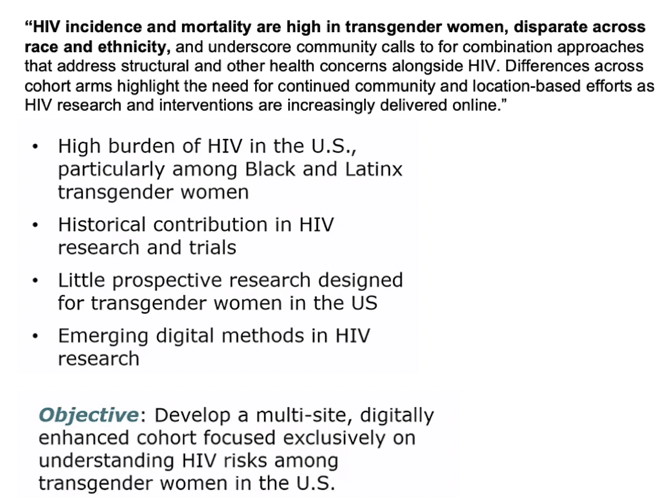
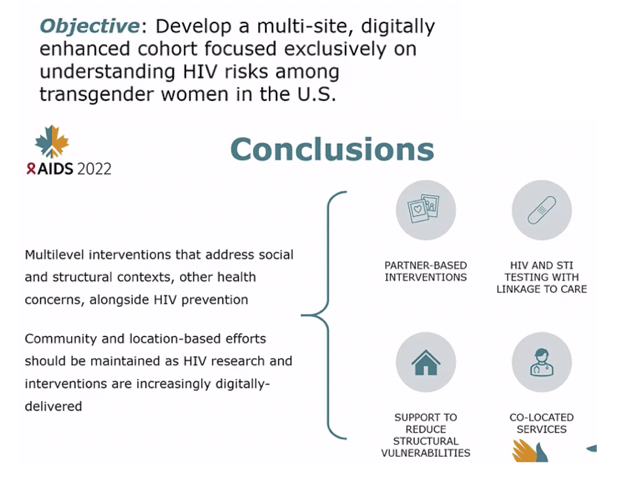
Presenter
Andrea L. Wirtz
Authors
A.L. Wirtz * (1), E. Humes (2), K.N. Althoff (2), T. Poteat (3), A. Radix (4), K.H. Mayer (5,6), C. Beyrer (1), J. Schneider (7), J.S. Haw (7), A.J. Wawrzyniak (8), A.E. Rodriguez (9), D. Adams (1), M. Stevenson (1), E.E. Cooney (10), S.L. Reisner (5,11,12,13)
Institutions
(1) Johns Hopkins University School of Public Health, Department of Epidemiology, Center for Public Health and Human Rights, Baltimore, United States, (2) Johns Hopkins University, Epidemiology, Baltimore, United States, (3) University of North Carolina School of Medicine, Center for Health Equity Research, Chapel Hill, United States, (4) Callen-Lorde Community Health Center, New York, United States, (5) Fenway Health, The Fenway Institute, Boston, United States, (6) Harvard Medical School, Beth Israel Deaconess Medical Center, Boston, United States, (7) Emory University, School of Medicine, Atlanta, United States, (8) University of Miami Miller School of Medicine, Department of Psychiatry and Behavioral Sciences, Miami, United States, (9) University of Miami, Miller School of Medicine, Division of Infectious Diseases, Miami, United States, (10) Johns Hopkins University, School of Public Health, International Health, Baltimore, United States, (11) Brigham Women''s Hospital, Division of Endocrinology, Diabetes, and Hypertension, Boston, United States, (12) Harvard University, Department of Medicine, Harvard Medical School, Boston, United States, (13) Harvard University, Harvard TH Chan School of Public Health, Department of Epidemiology, Boston, United States
program abstract
BACKGROUND: Transgender women are a priority population in the US HIV strategy due to social vulnerabilities and HIV burden, yet epidemiologic monitoring of HIV, premature death, and other events to inform public health is almost non-existent.
METHODS: We established a multi-site cohort for transgender women in eastern and southern US across two arms: 1) technology-enhanced site-based (Boston, New York City, Baltimore, Washington DC, Atlanta, Miami); 2) exclusively online (spanning 72 matched cities). Eligibility criteria: transfeminine; ages>=18 years; negative baseline HIV test; not in a PrEP trial. Participants were followed for >=24 months, completing surveys, rapid oral fluid HIV tests with confirmatory testing referrals and medical record reviews. Retention efforts (e.g., comprehensive locator, community outreach, events) permitted other event ascertainment, including death. HIV incidence and mortality rates were estimated as the number of observed events (HIV seroconversions or deaths) divided by the number of person-years(py) accumulated. We visualized Kaplan-Meier estimates of cumulative incidences (Figure) with a time-to-event approach that defines time-of-origin as study entry.
RESULTS: Enrollment launched March 2018 in the site-based arm and January 2019 in the online arm. 1,313 participants were enrolled with 83% retention, 2,479 person-years accumulated, and 12 identified seroconversions as of December 2021. HIV incidence was 4.8/1,000py (95%CI:2.1-7.6) overall and by group: online IR:1.8/1,000py, site-based IR:7.3/1,000py, Black participants IR:15.9/1,000py, Latinx participants IR:8.6/1,000py, and residence in South IR:8.6/1,000py. Seven deaths were identified (attributed causes: homicide, suicide, overdose, unknown). Mortality rates were 2.8/1,000py overall (95%CI:1.1-5.8); site-based: 4.4/1,000py and online: 0.9/1,000py, 3.5/1,000py in Black and 8.6/1,000py in Latinx participants.
CONCLUSIONS: HIV incidence and mortality are high in transgender women, disparate across race and ethnicity, and underscore community calls to for combination approaches that address structural and other health concerns alongside HIV. Differences across cohort arms highlight the need for continued community and location-based efforts as HIV research and interventions are increasingly delivered online.
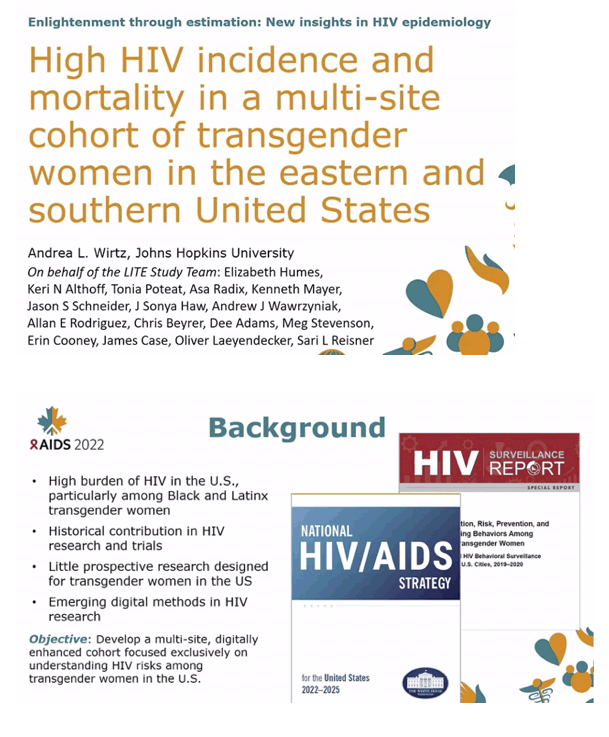
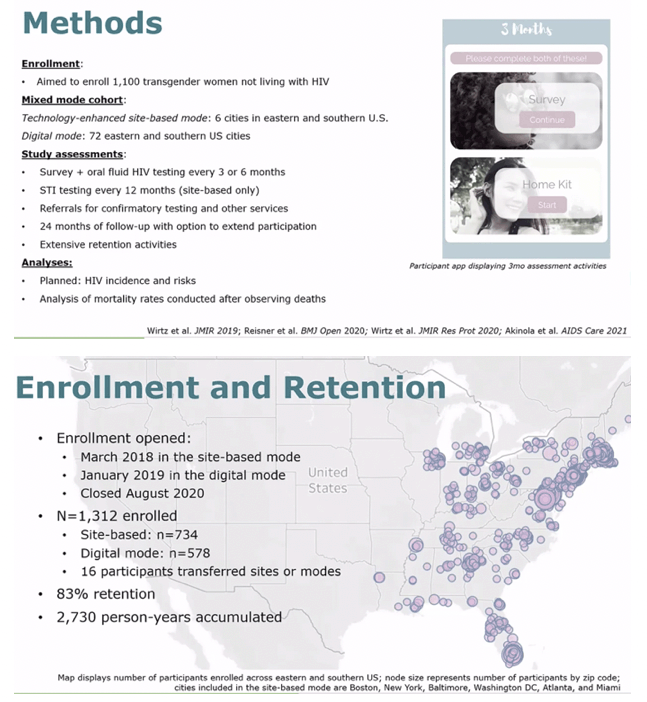
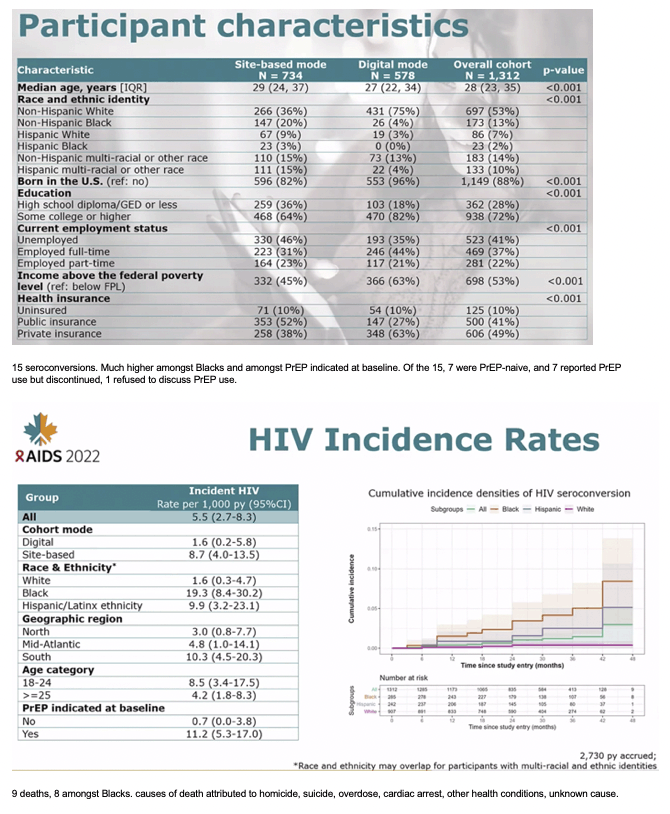
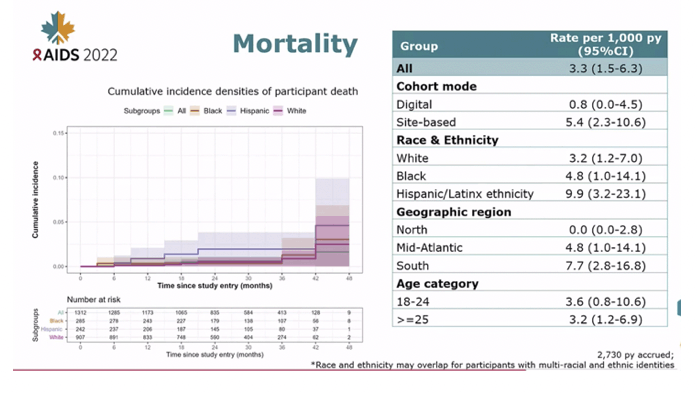
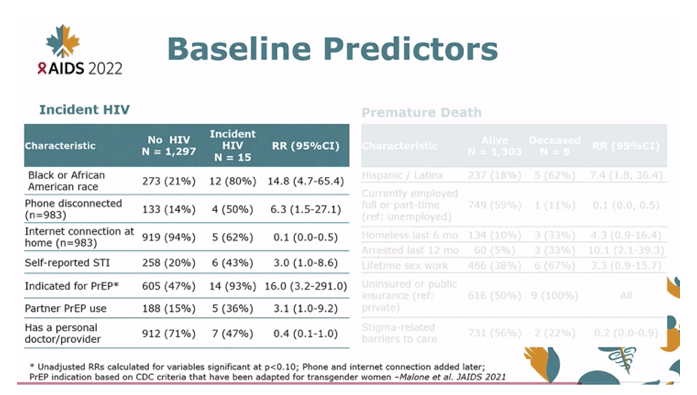
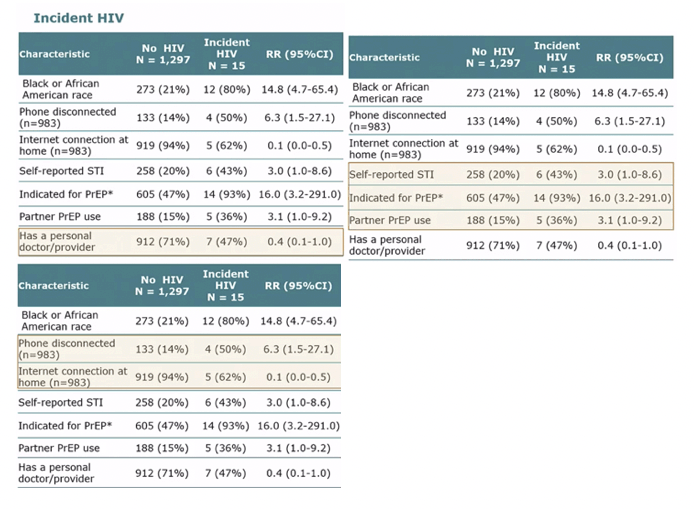
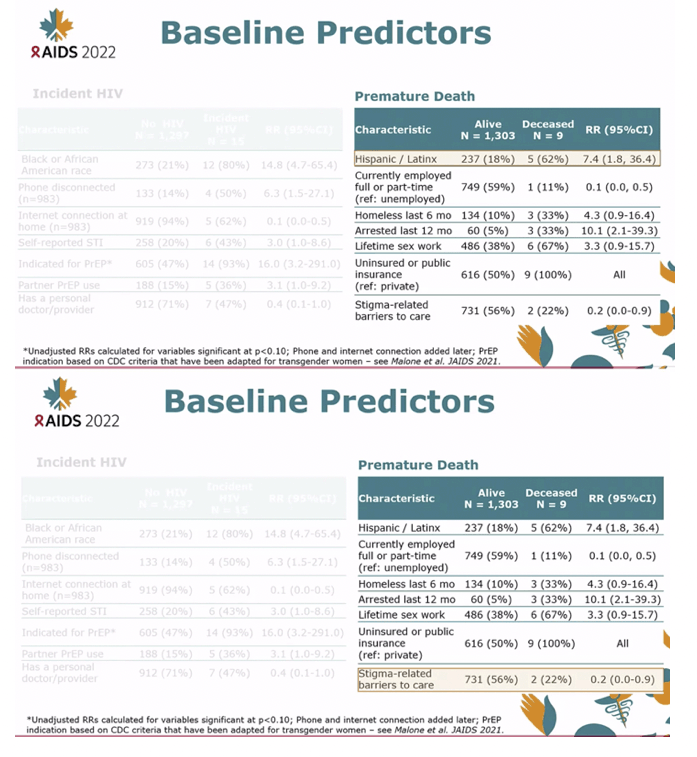
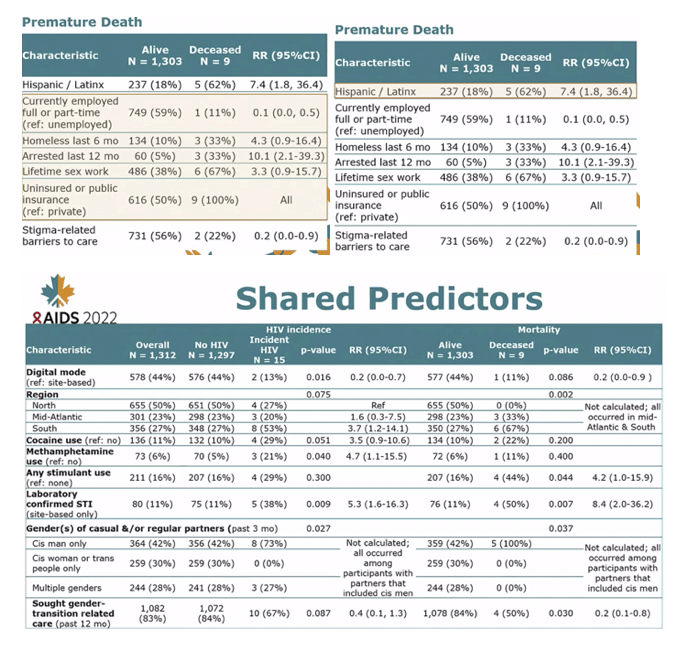
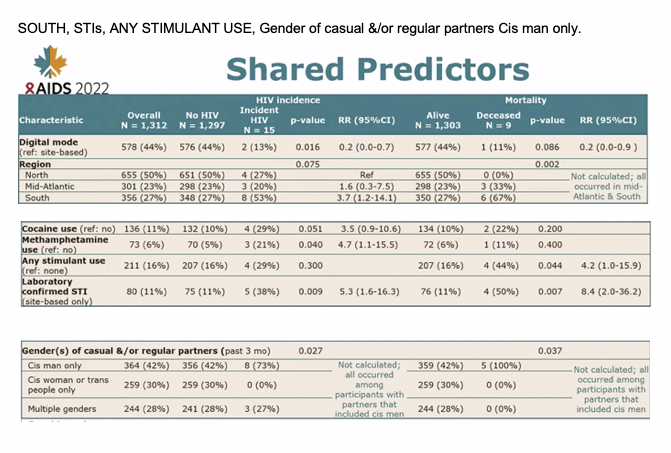
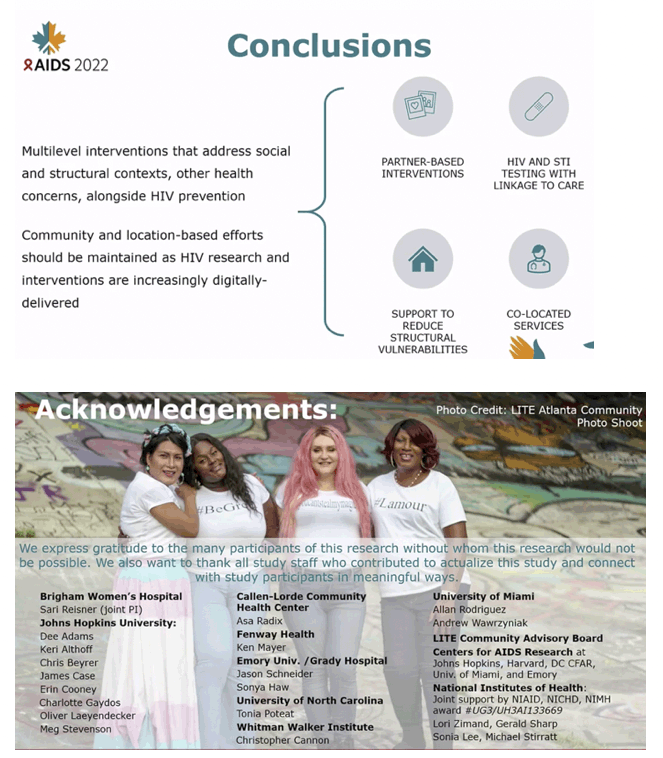
|
| |
|
 |
 |
|
|